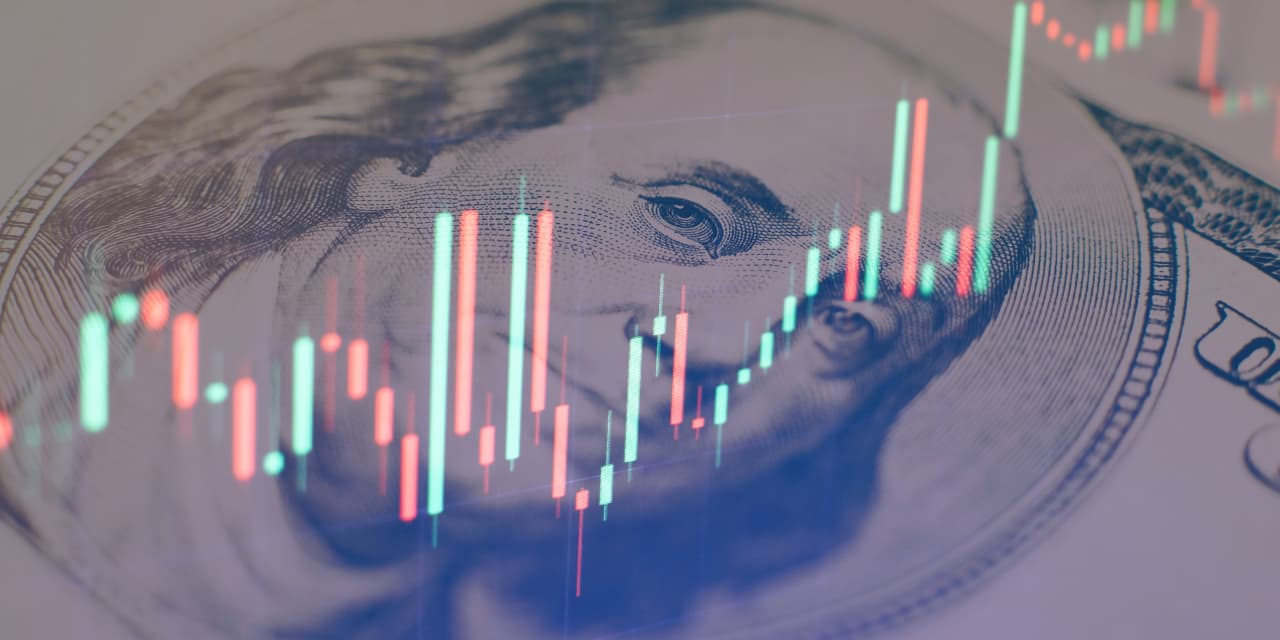Most large-cap stockpickers struggled to beat their benchmark in 2023. Blame it on bad breadth.
It’s tough to trounce the stock market consistently, and last year was no different. Just 38% of large-cap active mutual funds outperformed their Russell benchmark in 2023, according to Bank of America. The average fund underperformed by 1.6 percentage points.
While these stockpickers did better in 2022, when 47% beat their benchmark, 2023’s 38% hit rate is still roughly in line with the historical average, BofA said in a research note. The only time in the past 20 years that a majority of active large-cap funds outperformed was in 2007, when 61% of funds beat the benchmark.
The main reason for most funds’ underperformance in 2023 is that the market rally was driven by a small number of stocks.
“Last year was the narrowest breadth year in history, going back to 1987, meaning that if you look at the percentage of stocks in the
S&P 500
that actually beat the S&P 500 index, only 27% of stocks outperformed,” Ohsung Kwon, equity and quant strategist at BofA Securities, said in an interview.
“If breadth is low, it’s harder for active funds to outperform the index because the chance is higher that you don’t have those stocks that are outperforming,” he added. “Unless you had the Magnificent Seven, it was a tough year for active funds to outperform.”
The S&P 500 rose more than 26%, including dividends, in 2023, but it was the Magnificent Seven big tech stocks—
Apple,
Amazon.com,
Alphabet,
Meta Platforms,
Microsoft,
Nvidia,
and Tesla—that did most of the heavy lifting. According to S&P Dow Jones Indices, the seven accounted for 62% of the S&P 500’s total return. Excluding this group, the index’s return was 9.94% for 2023.
The seven stocks account for more than a quarter of the S&P 500, which is weighted by market capitalization, so their rallies pulled the entire index higher. Nvidia and Meta were the index’s top two performers, while Tesla rounded out the top 10. Even the laggard of the group, Apple, jumped more than 48% for the year.
Most other stocks didn’t join the party until November’s rally.
While core and growth funds lagged behind in 2023, with only one in three funds outperforming, it was a banner year for stockpickers focused on value—57% of value funds beat the benchmark, marking a fourth straight year of outperformance.
“If you look at the Russell 1000 Value Index, It doesn’t have the Magnificent Seven, so the breadth was higher in that index,” said Kwon.
Small-cap active funds struggled in 2023, with only 36% outperforming the benchmark, much lower than the past few years. In 2022, for example, 72% of these funds outperformed, and in 2021 it was even higher—85% outperformed, according to BofA.
The good news for active stockpickers is that breadth has started to improve, with 60% of stocks outperforming the S&P 500 since November, according to BofA.
“If the rally continues to broaden, active funds will have greater odds of selecting winners in 2024,” the firm said.
But for the rally to broaden, cyclicals need to participate, Kwon said. Those stocks didn’t join the rally until November. Now that worries about the economy and a recession have eased, and the consensus points to interest-rate cuts, cyclicals have the potential to outperform, Kwon said.
“And if that’s the case, we are going to see broader participation in the rally,” he added.
Many active managers simply couldn’t keep up with the Magnificent Seven in 2023, but if the tech giants lose steam in 2024 while other stocks and sectors pick up, diversified funds will have a better shot at outperforming.
Write to Lauren Foster at lauren.foster@barrons.com
Read the full article here













